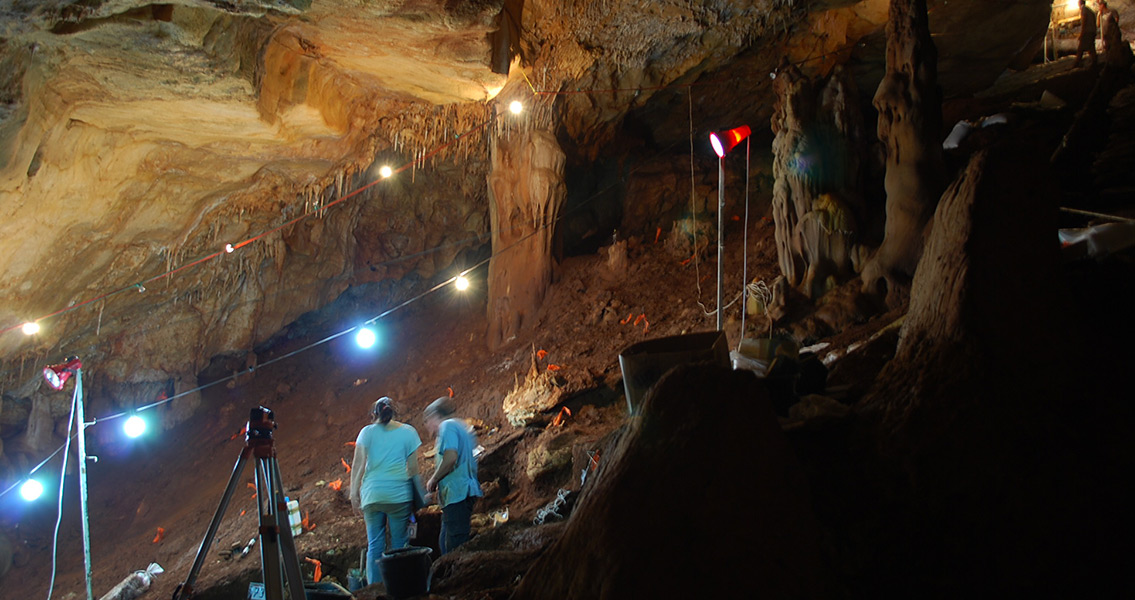<![CDATA[A new discovery could pinpoint when Eurasia was colonised by humans. One of the most significant events in human history was when modern humans of African origin began moving across Eurasia, eventually replacing all other forms of hominins. It is widely accepted that the origins of modern humans date back 200,000 years to Africa. For decades, however, it has been fiercely debated precisely when the group of Homo sapiens which populated Europe and Asia migrated into the Levantine corridor (the modern-day Middle East). Fossil records prove that some anatomically modern humans reached the Levantine corridor about 100,000 years ago. From genetically testing modern people, however, it appears that all humans inhabiting the world today are descended from a single group of H. Sapiens; it is thought this group migrated out of Africa 70,000 years ago. Owing to the scarcity of human fossils from this period, however, exactly when the ancestors of all modern populations moved into Eurasia remains largely mysterious. A new discovery may conclusively prove when modern humans made their first steps towards colonising Eurasia. An almost complete skull, dating back 55,000 years, provides direct anatomical evidence of when modern humans had settled in the Levant corridor. The skull, discovered by Prof. Israel Hershkovitz from Tel Aviv University, was found in Manot Cave, Western Galilee, Israel. Prof. Hershkovitz's findings are published in the most recent issue of Nature. "The morphology of the skull indicates that it is that of a modern human of African origin, bearing characteristics of early European Upper Palaeolithic populations. This suggests that the Levantine populations were ancestral to earlier European populations," said Prof. Hershkovitz. It appears that the Manot people inhabited the Levant at the same time as other hominins. It is thought that as both Manot H.sapiens and Neanderthals were in the area 55,000 years ago, interbreeding between their populations could have occurred. "This study also provides important clues regarding the likely inbreeding between anatomically modern humans and Neanderthals," Prof. Hershkovitz said. The skull, according to Prof. Hershkovitz, disproves two major historical narratives. Firstly, it shows that not all human populations are linked to migrations out of Africa 100,000 years ago. The Manot skull provides the first physical evidence that modern humans left Africa 60,000 years ago, and then settled in the Levant. Rather than being direct migrants from Africa, the humans that first colonised Europe could have been descendants of these settlers in the Levant. "This skull dates back 55,000 years, a critical time period," said Prof. Hershkovitz. "This skull means [modern humans] settled in the Levant for a long period of time, before moving to Europe (45,000 years ago)". Secondly, the Manot skull refutes the assumption that early European Upper Palaeolithic populations never interbred with European Neanderthals. There was a flourishing Neanderthal community in the Levant 55,000 years ago, "The Manot people must have communicated, shared tools and interbred with [Neanderthals]," said Prof. Hershkovitz. "[The Levantine corridor] was probably the only place on earth where Neanderthals and anatomically modern humans lived side by side for a long period of time". Prof. Hershkovitz's discovery offers ground-breaking insight into how the earliest humans first began colonising outside of Africa. It also provides evidence that Neanderthals did not suddenly become extinct after coming into contact with modern humans - coexistence and possibly interbreeding occurred. For more information: Image courtesy of Wikimedia commons user: Manot Cave Expedition]]>
Ancient Skull Reveals When Humans Colonised Eurasia
